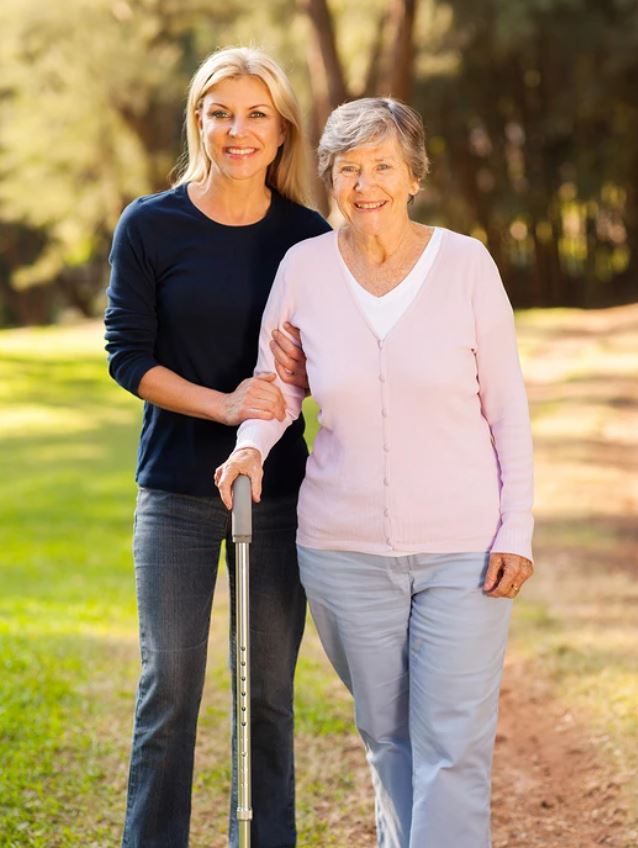According to the Centre for Disease Control (CDC): “Every second of every day in the United States an older adult falls, making falls the number one cause of injuries and deaths from injury among older Americans.” (Source)

Every second of every day. Think about that for one second and, in that time, another senior has fallen, with the risk of serious injury or even death.
Why are seniors more prone to falling?
There are three reasons why older people are prone to falling:
- Illnesses that affect balance, such as Meniere’s Disease or labyrinthitis, which is basically an inflammation of the inner ear that can leave a person with dizziness, vertigo, lightheadedness and so on. Even a flu or the common cold can affect balance and lead to a fall.
- Physical impairments, such as poor vision or lack of muscle strength.
- Chronic conditions, such as heart disease, hypotension (low blood pressure) and others, which can cause a loss of balance, lightheadedness, or fainting, all of which could lead to a fall.
Of the three, the second is the easiest to work on because the causes can be managed. Age related muscle loss, or sarcopenia, can be worked on through balance and strength exercises, as well as the maintenance of general physical activity and a healthy, protein rich diet.
Why are slip and fall accidents more serious for seniors than others?
First of all, many seniors, particularly women, deal with osteoporosis. This is the degeneration—or weakening—of bone density that occurs with age. This happens to all of us, starting around age 35. A low bone density makes the bones more fragile, so a simple slip and fall that would result in a 10 year old bouncing up and down in no time, can result in serious injuries, including brain injuries, and fractures of major bones for seniors.
In 2014, more than 27,000 injuries to seniors from slip and fall accidents led to death. That’s a huge number, even compared with the fact that 2.8 million American seniors had a slip and fall that had to be treated at the ER; of those, 800,000 were hospitalized as a result of their injuries. (Source)
How are seniors having slip and fall accidents?
Aside from dizziness or other issues caused by illness or chronic conditions, there’s a myriad of ways a senior might end up having a slip and fall accident.
Issues like poor vision or lack of muscle strength can turn basic impediments into things that can be the cause of a trip and fall accident. Things that you might not notice in your thirties and forties can be a hazard for an older person. Like what?
- A step that isn’t visible because it doesn’t have any edging on it.
- Uneven ground that the person doesn’t see the pitch on. Also, seniors tend to lose some of their sensation over time, starting with the feet, so they may not be able to sense when the ground is becoming uneven or going from a hard to soft surface.
- A carpet that has been pulled up slightly on the edge.
- Throw rugs.
- Dim or insufficient lighting.
- Wet floors, such as in a bathroom.
- Stairs in general, as well as high placed items, requiring the individual to reach or to use a ladder.
Slip and fall injuries can mean an important loss of independence for seniors, a fact that explains why they are underreported. Many seniors don’t tell anyone the first or second time they fall at home, for fear of losing their independence. The problem with that is that any preventive measures—and many falls ARE preventable—that could be put in place are delayed, with the possible result being a more significant slip and fall that leads to serious injury, or worse.
7 ways that you can prevent slip and fall accidents in and around your home
- Have a physician review all medications that you’re taking to make sure that none of them, or no combination of them, have side effects that result in dizziness. Check often for issues like thyroid or vitamin B deficiencies—particularly B12—as these can lead to dizziness and vertigo.
- Add railings and non-slip adhesives to bathrooms: by the toilets and in the tub or shower stall, to give yourself stability when using the facilities. And don’t forget lighting! Dark stairways into the basement are a prime way to end up in a slip and fall situation!
- Get rid of carpets or throw rugs that cannot be properly secured and make sure that flooring is in good repair everywhere around the house. Get rid of clutter that creates a trip and fall hazard, particularly on stairs and in hallways.
- Don’t skip your annual eye exam and if you feel your sight is deteriorating faster, go sooner! If you’re worried about falling because of issues of depth perception, bifocals might be a bad choice as you can’t see the floor as well when walking. Invest in two separate pairs of glasses: one for walking and one for reading.
- Wear shoes that are appropriate! Sneakers or loafers with a rubber, anti-skid soles on them will help prevent slips but will also allow you to have a better sense of the ground and any changes. Boots with a good tread are essential in winter; a pair of ice grips are a good choice if you are walking outside. Avoid slip on slippers that don’t have support or hold. High heels should become a thing of the past.
- Stay active. Keeping muscles toned and in good condition, practicing safe balancing exercises, stretches for flexibility, and in general staying fit, will go a long way to keeping you limber and going strong. Leg muscles in particular will help you, but so will core muscles (stomach / chest)
- Don’t ignore even little illnesses: a low grade fever from an infection could be what leads to dizziness and a more serious slip and fall.
If you have someone in your life that might benefit from a little extra care at home, they might see it as a loss of independence, but it’s really the opposite! That extra care ensures that they can maintain their independence for as long as possible. Give us a call at 470-260-4137.
